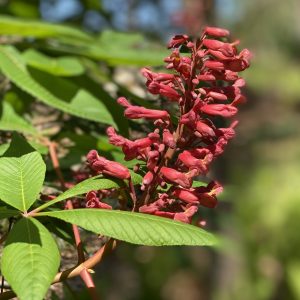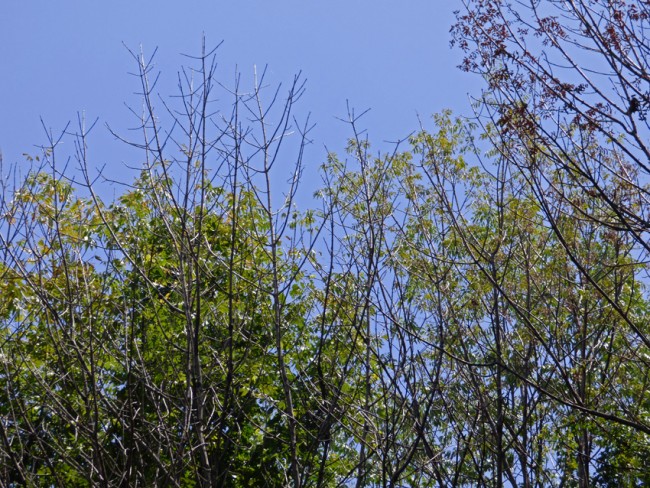
On a recent trip to Cincinnati, I noticed many trees along I-71 which appeared to be dead or dying. A quick glance at the leaves showed them to be ash trees, which are very common in Kentucky. However, due to the invasion of the Emerald Ash Borer (EAB), we may soon lose most of our ash trees. Previous blights and invasive insects have killed the American Chestnut tree, Sycamore, Elm and Hemlock trees, so unfortunately, this isn’t something new.
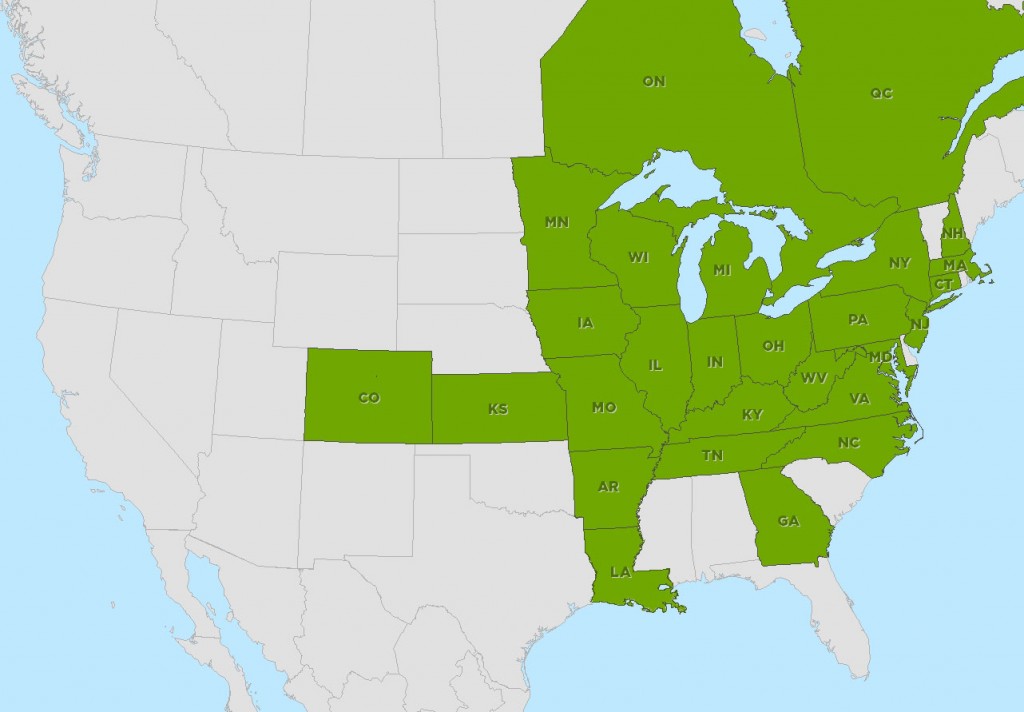
Emerald ash borer (EAB), Agrilus planipennis Fairmaire, is an exotic beetle that was discovered in southeastern Michigan near Detroit in the summer of 2002. Emerald ash borer is also established in Windsor, Ontario, was found in Ohio in 2003, northern Indiana in 2004, northern Illinois and Maryland in 2006, western Pennsylvania and West Virginia in 2007, Wisconsin, Missouri and Virginia in the summer of 2008, Minnesota, New York, Kentucky in the spring of 2009, Iowa in the spring of 2010, Tennessee in the summer of 2010, Connecticut, Kansas, and Massachusetts in the summer of 2012, New Hampshire in the spring of 2013, North Carolina and Georgia in the summer of 2013, Colorado in the fall of 2013, New Jersey in the spring of 2014, Arkansas in the summer of 2014, and Louisiana in the winter of 2015.
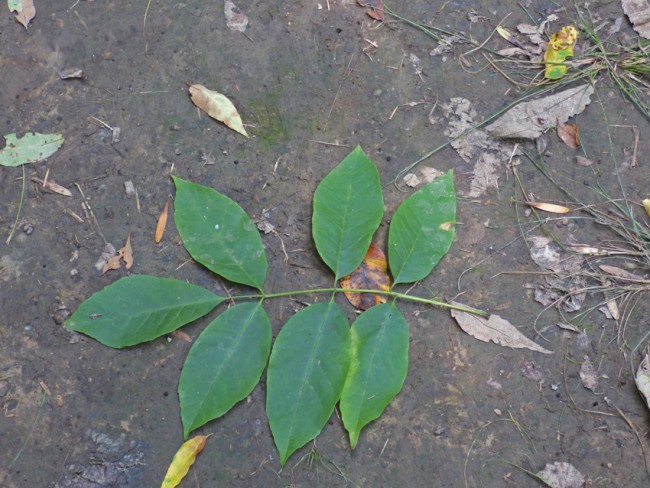
A simple leaf is a single leaf defined by having a bud at the base of the leaf stem (also known as a petiole).
A compound leaf is one that has more than one leaflet while the entire leaf, as defined, has a bud at its stem base (petiole). Ash typically have approximately 5-9 leaflets per leaf. Their seeds and bark of ash are also unique. Ash fruit is a single samara, or seed surrounded by dry, oar-shaped wings that help with dispersal. Some older ash trees have a characteristic diamond pattern to their bark.
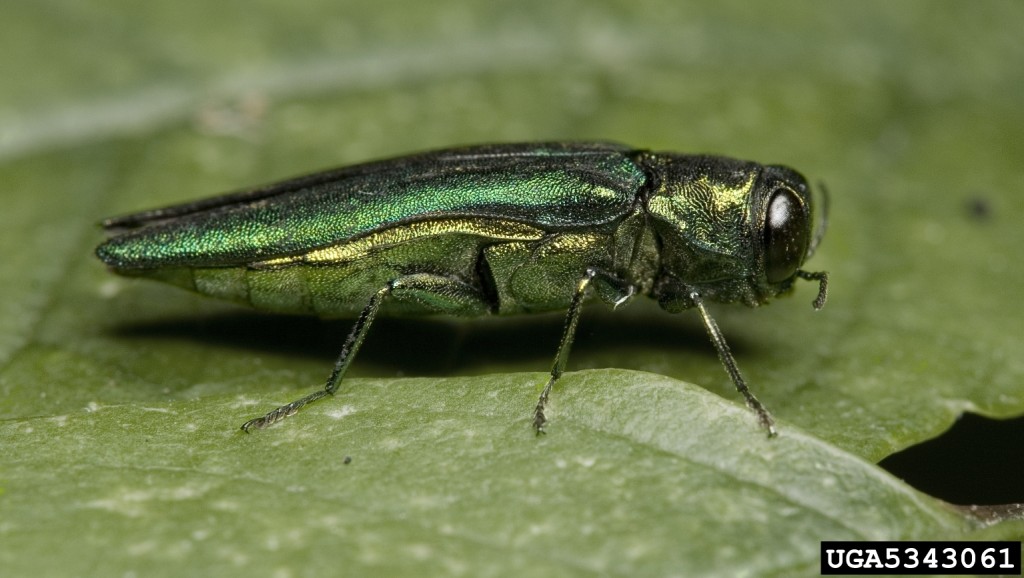
The adult beetles nibble on ash foliage but cause little damage. The larvae (the immature stage) feed on the inner bark of ash trees, disrupting the tree’s ability to transport water and nutrients. Emerald ash borers probably arrived in the United States on solid wood packing material carried in cargo ships or airplanes originating in its native Asia. We know EAB adults can fly at least 1/2 mile from the tree where they emerge. Many infestations, however, were started when people moved infested ash nursery trees, logs, or firewood into uninfested areas. Shipments of ash nursery trees and ash logs with bark are now regulated, and transporting firewood outside of the quarantined areas is illegal, but transport of infested firewood remains a problem. PLEASE – do not move any ash firewood or logs outside of the quarantined area.

Look at the trunk of the ash tree, and you may find the “bore” holes at about eye level, where the adults have bored out of the wood where they lived as larvae. The canopy of infested trees begins to thin above infested portions of the trunk and major branches because the borer destroys the water and nutrient conducting tissues under the bark. Heavily infested trees exhibit canopy die-back usually starting at the top of the tree. One-third to one-half of the branches may die in one year. Most of the canopy will be dead within 2 years of when symptoms are first observed. Sometimes ash trees push out sprouts from the trunk after the upper portions of the tree dies. Although difficult to see, the adult beetles leave a “D”-shaped exit hole in the bark, roughly 1/8 inch in diameter, when they emerge in June.

